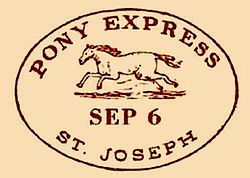
The Gaslamp Quarter is a historic neighborhood in downtown San Diego, California. It extends from Broadway to Harbor Drive and from 4th to 6th Avenue. The neighborhood is listed as a historic district on the National Register of Historic Places as the Gaslamp Quarter Historic District. It includes over 90 historic buildings, most of which were constructed in the Victorian era; many are in use as restaurants, shops, entertainment venues, and nightclubs.
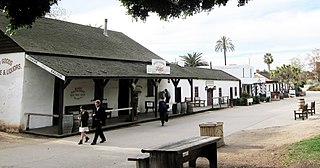
Old Town San Diego State Historic Park is a state protected historical park in the Old Town neighborhood of San Diego, California. The park commemorates the early days of San Diego; it includes many historic buildings from the period 1820 to 1870. The park was established in 1968. In 2005 and 2006, California State Parks listed Old Town San Diego as the most visited state park in California.

Monterey State Historic Park is a historic state park in Monterey, California. It includes part or all of the Monterey Old Town Historic District, a historic district that includes 17 contributing buildings and was declared a National Historic Landmark in 1970. The grounds include California's first theatre, and the Monterey Custom House, where the American flag was first raised over California.

El Presidio Real de San Diego is a historic fort in San Diego, California. It was established on May 14, 1769, by Gaspar de Portolá, leader of the first European land exploration of Alta California—at that time an unexplored northwestern frontier area of New Spain.

A Western saloon is a kind of bar particular to the Old West. Saloons served customers such as fur trappers, cowboys, soldiers, lumberjacks, businessmen, lawmen, outlaws, miners, and gamblers. A saloon might also be known as a "watering trough, bughouse, shebang, cantina, grogshop, and gin mill". The first saloon was established at Brown's Hole, Wyoming, in 1822, to serve fur trappers.

Downtown San Diego is the central business district of San Diego, California, the eighth largest city in the United States. It houses the major local headquarters of the city, county, state, and federal governments. The area comprises seven districts: Gaslamp Quarter, East Village, Columbia, Marina, Cortez Hill, Little Italy, and Core.

Presidio Park is a city historic park in San Diego, California. It is the site where the San Diego Presidio and the San Diego Mission, the first European settlements in what is now the West Coast of the United States, were founded in 1769.

El Pueblo de Los Ángeles Historical Monument, also known as Los Angeles Plaza Historic District and formerly known as El Pueblo de Los Ángeles State Historic Park, is a historic district taking in the oldest section of Los Angeles, known for many years as El Pueblo de Nuestra Señora la Reina de los Ángeles del Río de Porciúncula. The district, centered on the old plaza, was the city's center under Spanish (1781–1821), Mexican (1821–1847), and United States rule through most of the 19th century. The 44-acre park area was designated a state historic monument in 1953 and listed on the National Register of Historic Places in 1972.

Save Our Heritage Organisation (SOHO) is a non-profit organization devoted to the preservation of the historic architecture and landmarks around the San Diego, California, area. Founded in 1969, Save Our Heritage Organisation maintains several historic buildings including the Whaley House and the George W. Marston House. They are directly partnered with the National Trust for Historic Preservation.
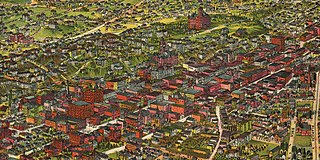
The late-Victorian-era Downtown of Los Angeles in 1880 was centered at the southern end of the Los Angeles Plaza area, and over the next two decades, it extended south and west along Main Street, Spring Street, and Broadway towards Third Street. Most of the 19th-century buildings no longer exist, surviving only in the Plaza area or south of Second Street. The rest were demolished to make way for the Civic Center district with City Hall, numerous courthouses, and other municipal, county, state and federal buildings, and Times Mirror Square. This article covers that area, between the Plaza, 3rd St., Los Angeles St., and Broadway, during the period 1880 through the period of demolition (1920s–1950s).
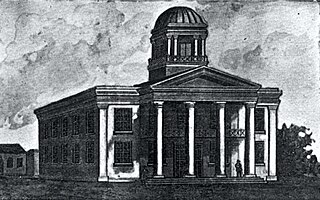
Sacramento First Courthouse also, Former California State Capitol site, is historical site in Sacramento, California. The Courthouse was also the first and second California State Capitol. The site is California Historical Landmark No. 869, registered on January 11, 1974. At the northwest corner of 7th Street and I Street, 651 I Street, Sacramento was a building that served as California's State Capitol. The first period was January 16, 1852 to May 4, 1852, and the second period was from March 1, 1854, to May 15, 1854, with the California State Legislature third and fifth sessions. The 651 I Street building was the Sacramento County courthouse. The site of former California State Capitol - Sacramento County courthouse is now the Main Sacramento County Jail built in 1989. A California Historical marker was place at the site in 2007 by California State Parks working the Sacramento Trust for Historic Preservation.

Casa de López was a historical adobe building in San Diego, California, constructed in the early 1800s. The Casa de López site is a California Historical Landmark No. 60, listed on December 6, 1932. Often called la casa larga, or long house, it was built for the López family, early Spanish settlers of San Diego.

Casa de Stewart, also called La Casa de Machado y Stewart, is a historical adobe building in San Diego, California, built in 1835. The Casa de Stewart site is a California Historical Landmark No. 73, listed on December 6, 1932.
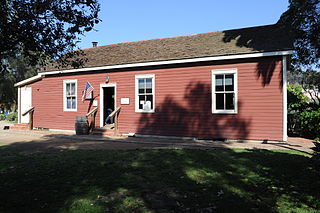
Mason Street Schoolhouse is a historical building in San Diego, California, built in 1865. The Mason Street School District No. 1 is a California Historical Landmark No. 538, listed on September 14, 1955. The school building, now hosting the Mason Street School Museum, is in Old Town, San Diego, at 3966 Mason Street.

San Diego Viejo Plaza, also called Plaza de Las Armas, Old Town Plaza, and Washington Square, is a historical site in San Diego, California. The San Diego Viejo Plaza site is California Historical Landmark No. 63, listed on December 5, 1932. The plaza was the center of the Pueblo de San Diego, founded in 1835 in Alta California.
